Witchdoctor Rating
-
- 8/108/10
Summary
Metrum Acoustics Amethyst DAC/Headphone Amplifier $2150
ANDREW BAKER gets his PC fired up for some sonic exploration with Metrum’s very tasty Amethyst DAC/headphone amp.
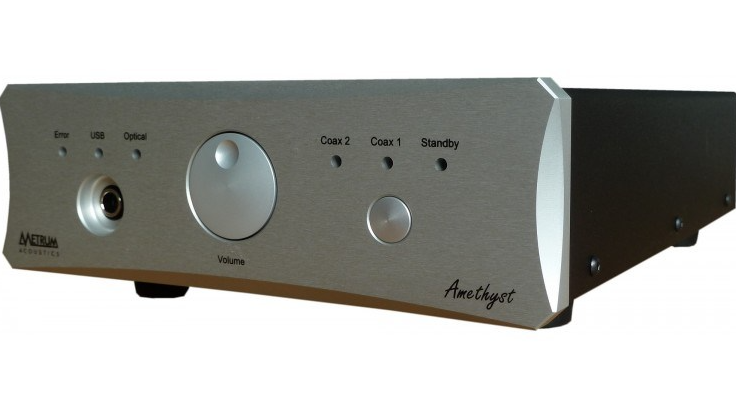 I must admit I was more than a little surprised when Ian Brown from Critical Sound, the New Zealand importer of Metrum Acoustics, contacted me to see if I would like to review the little Amethyst NOS DAC and headphone amp. I thought I might have burnt that bridge after spending an exorbitant amount of time reviewing the Pavane DAC, but Ian assured me thugs would be sent if I exceed the allotted time with the Amethyst. As it happened, I was rather pleased to have another Metrum Acoustics product to try out. They really are a favourite of mine, because whether I’ve looked at entry level or flagship, so far, they haven’t failed to impress me.
I must admit I was more than a little surprised when Ian Brown from Critical Sound, the New Zealand importer of Metrum Acoustics, contacted me to see if I would like to review the little Amethyst NOS DAC and headphone amp. I thought I might have burnt that bridge after spending an exorbitant amount of time reviewing the Pavane DAC, but Ian assured me thugs would be sent if I exceed the allotted time with the Amethyst. As it happened, I was rather pleased to have another Metrum Acoustics product to try out. They really are a favourite of mine, because whether I’ve looked at entry level or flagship, so far, they haven’t failed to impress me.
Based in the Netherlands, Metrum Acoustics is the brainchild of Cees Rujtenberg, who set about designing and building his own DAC chip modules and, from his kitchen table, incorporating them into digital to analogue converters of his own for the audiophile market, as well as supplying OEM companies.
The first DAC arrived in 2010 and was more or less an instant success, and the company has quickly grown its catalogue from decently priced entry level to innovative high end (and still relatively decently priced) DACs, headphone amps and pre- and power amps. They also now operate out of a proper factory, presumably sans kitchen table.
Those Transient DAC chip modules are crucial to the Metrum sound, but it is perhaps the implementation of their NOS (non-oversampling) design that ices the cake. Oversampling is a method of filtering out those digital nasties, or artefacts, that tend to distinguish digital recordings from analogue, but there are those who prefer a NOS design, considering its sound to be closer to vinyl while sounding more ‘right’ in general. Unsurprisingly, in the world of the audio hobbyist, this is a divisive topic, but these Metrum DACs have deservedly gathered a lot of interest from both sides. Making a NOS design without digital artefact to sound right to even the most discerning of ears is perhaps a rather difficult prospect, and this is where the expertise of Metrum’s designers and engineers comes in.
Like most Metrum DACs, the Amethyst is simple yet attractive with black metal case and thick aluminium front panel (the review unit was sexy silver, but they are also available in black), though this time each of the outer edges of the front panel are bevelled to gracefully curve inwards. The Amethyst is also quite small compared to its siblings, at 440 x 320 x 85 mm and weighing 2.5kg.
On the front is the on/off/select button, LED lights to indicate which of the three inputs are selected, standby/power and error. There’s also a 6.35mm headphone jack and its associated volume control, which is only active when headphones are plugged in. When the headphones are unplugged, the DAC diverts straight to the RCA outputs, so it can be used as a dedicated standalone stereo DAC. The volume control is set into the front panel, not sitting proud like a normal knob, which I suppose makes it look less imposing on the small unit, and there’s a wee indent for your finger for ease of turning. The volume control is designed to power lower impedance headphones down to 16 Ohms. The headphone output impedance is given at 3ohms while the DACs output impedance is 100ohms.
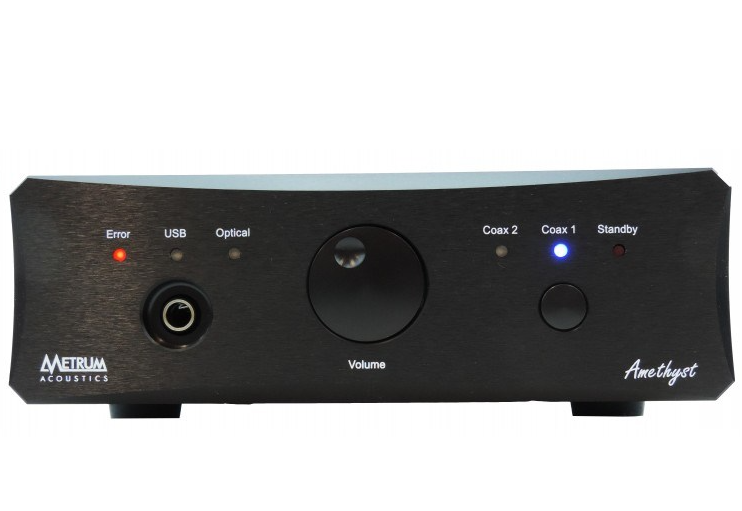 Around the back are standard RCA in and outputs, nothing fancy, just two sets of coaxial as well as optical and USB, and there’s also the power input and main power switch. The Amethyst is an entry-level product, so for fancy balanced inputs and such like you’ll have to go further up the chain. Note that there is no pre-amp function – you’ll have to go up to the Jade model for that, and then you lose the headphone amp. Optical input provides 44.1-96 kHz sampling rate, Coaxial 44.1- 192 kHz and USB 44.1 kHz-384 kHz. Also note that this DAC does not handle MQA or DSD files, about which you’ll not find me grumbling.
Around the back are standard RCA in and outputs, nothing fancy, just two sets of coaxial as well as optical and USB, and there’s also the power input and main power switch. The Amethyst is an entry-level product, so for fancy balanced inputs and such like you’ll have to go further up the chain. Note that there is no pre-amp function – you’ll have to go up to the Jade model for that, and then you lose the headphone amp. Optical input provides 44.1-96 kHz sampling rate, Coaxial 44.1- 192 kHz and USB 44.1 kHz-384 kHz. Also note that this DAC does not handle MQA or DSD files, about which you’ll not find me grumbling.
The Amethyst features trickle-down technology from Metrum’s Pavane DAC like the forward correction technology that helps produce the 24-bit sound, and it uses two Transient R2R DAC Two modules – one per channel.
For listening I used my laptop running the ever-dependable JRiver media player with various FLAC, WAV and MP3 files, some of which are high resolution (24/192kHz) and some standard CD quality. Some (MP3) are less than CD quality, but still well worth listening to. I use an Audioquest Jitterbug USB ‘data and power noise filter’ between my computer’s USB port and the USB cable to try and keep the signal as clean as possible. While I haven’t been tempted to fall off my sofa in surprise at the results achieved by the Jitterbug as at least one reviewer has claimed, I do find the diminutive device subtly contributes to a cleaner sound and quieter noise floor.
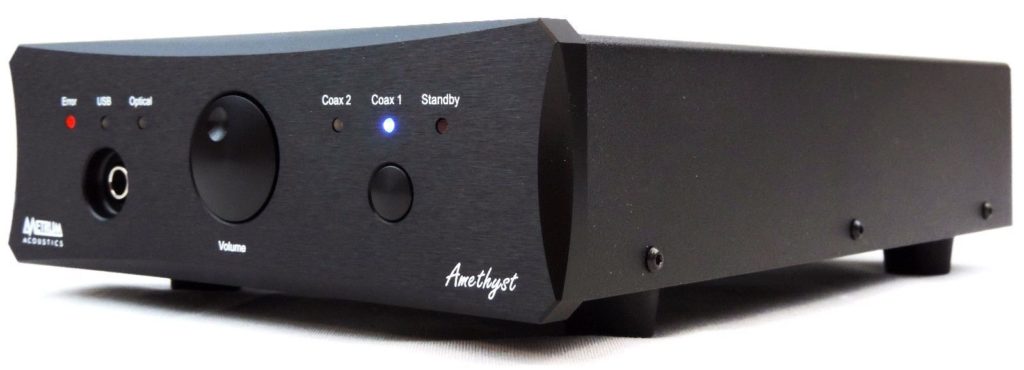 I make and use my own USB cables from heavily shielded microphone cable and get similar results. The main reason I make my own USB cables is because a lot of forum-dwelling audio snobs assert that doing so is a complete waste of time. However, for the benefit of the doubt(ers), for this test I used the supplied USB cable, though I kept the Jitterbug in place. For antisocial listening I used a pair of old Sennheiser HD420s which have an impedance of 600ohms, and some Grado Reference RS2s with an impedance of 32ohms; headphones aren’t normally my thing for serious sessions, but I have such fond memories of the Aurix headphone amp I reviewed a while back that I had to give them a go. To annoy the neighbours (hopefully), I used my 140wpc valve hybrid integrated amplifier and Reference 3A floor standing speakers. I use audiophile quality speaker, RCA and power cables (but I won’t admit to it) as well as Les Davis Audio isolation footers under most components and even between speaker spikes and hardwood floor.
I make and use my own USB cables from heavily shielded microphone cable and get similar results. The main reason I make my own USB cables is because a lot of forum-dwelling audio snobs assert that doing so is a complete waste of time. However, for the benefit of the doubt(ers), for this test I used the supplied USB cable, though I kept the Jitterbug in place. For antisocial listening I used a pair of old Sennheiser HD420s which have an impedance of 600ohms, and some Grado Reference RS2s with an impedance of 32ohms; headphones aren’t normally my thing for serious sessions, but I have such fond memories of the Aurix headphone amp I reviewed a while back that I had to give them a go. To annoy the neighbours (hopefully), I used my 140wpc valve hybrid integrated amplifier and Reference 3A floor standing speakers. I use audiophile quality speaker, RCA and power cables (but I won’t admit to it) as well as Les Davis Audio isolation footers under most components and even between speaker spikes and hardwood floor.
Beginning with headphones, I listened to ‘Nature Boy’ from Lisa Ekdahl’s Back To Earth album (CD to FLAC rip) where both the HD420 and RS2 headphones captured the percussive nature of the piano rather nicely – though it was the Grados working with the Amethyst that really excelled here. Piano notes had greater clarity and sounded very natural, the easy to drive RS2s giving more air and spatial awareness than the older Sennheisers. Through both sets of ‘phones, Ekdahl’s voice hung solidly between my ears with a good level of presence and nuance and bass and drums kept a good rhythm.
Next, the smoky psychedelic drone-rock of Japanese band Tolchock from their 2014 album After Fog Open has a trippy circular kind of pattern and it gives the frequency range, especially the upper registers, a bit of a work out, particularly the 18-plus-minute opener ‘Behind The Ground’. There’s blissed-out bass and drums, droning rhythms and searing, high-reaching electric guitar – I was expecting it to be all too much with close-range listening, but the headphones stayed on my head throughout, no trouble. Sure, at times it could get intense, but it was adrenaline that surged, a lust for the pulsating ambience and lysergic head rush, rather than an urge to rip the headphones off my ears.
Jane Weaver’s ‘Architect’ from her Krautpop-inspired 2017 album Modern Kosmology (that ‘K’ must be a big clue) sounded lush and infectious with a big and believable drum sound that filled the background in powerful fashion. Elsewhere on the album, the motorik forward-flow of the music with its ostinato patterns, swathes of cosmic sounds and dreamy vocal harmonies translated nicely through the Amethyst, seeming to be an ideal match. The urgency and tension created sometimes by waves of synthesisers peppered with swelling electronic effects and other times by a haze of chunky jangling guitars came across nicely. I like how the album begins and ends with the same bass line – like some sort of musical cosmic cycle.
Moving to tracks from Tortoise’s 1998 album TNT, I enjoyed a spacious, well-balanced and altogether neutral sound. The natural liquidity and flow of the album was captured nicely without ever descending into listener fatigue. In fact, the longer I listened, the less I wanted to stop. I was reminded of the time a techno DJ told me back in 1999 that this was an album DJs liked to come home and relax to after a hard night on the decks. It’s a lovely textured mixture of post-rock, post-jazz and electronica, with each track blending right into the next, and again the Amethyst seemed right at home. I bought this album on CD in Dublin, Ireland in 1999 and my wife and I would huddle together in our tiny flat located near Phoenix Park, listening to it with a Sony Discman and a pair of crappy earphones each, going into a y-splitter jack because we had no stereo or telly. I think I can safely say the Amethyst experience is miles ahead.
I gave both sets of headphones a good run and enjoyed using each of them, though perhaps unsurprisingly the Grados were the better match. Stereo imaging was always decent, bass strong and well controlled, though it had a welcome lightness that meant my ears weren’t overpowered with low-end thump. Good dynamics and detail retrieval kept things interesting. As you might expect, I needed to turn the volume up quite a bit more with the Sennheisers, and they also sounded a bit more closed-in and less airy – all quite possibly due to that heavy load the Amethyst was being forced to drive. Remember though, that they are an older headphone and probably sound a bit muffled by modern standards. Using the HD420s was an interesting experiment and although they probably wouldn’t be my choice for the long-term they aren’t an altogether bad option. There was no noise or hiss from either pair of headphones and the background was dark and quiet.
I first heard the Lisa Ekdahl (with the Peter Nordahl Trio) track through a pair of big DeVore ‘Silverback’ speakers with Shindo amplifiers and a Naim streamer running Spotify. This jazz ensemble consisting of drums, piano, upright bass and voice sounded wonderfully natural and extended into the room with superb tone structure and breathtaking vocal portrayal. It has ‘audiophile’ written all over it which might normally put me off, but I couldn’t resist racing out and ordering myself a copy of the album on CD. Through my own humbler system, the effect isn’t quite so explicit, but it is no less captivating.
With the Amethyst employed in DAC mode I enjoyed good instrument timbres, percussive piano notes, thrumming bass and buoyant drumming with sharp, crisp cymbals. The natural warmth of the bass came through and the notes had natural decay, as did the piano. Ekdahl’s voice was expressive and nuanced – I could even kinda sense the movements of her mouth as she sang. The Amethyst displayed good depth and detail retrieval for a product in this league, though not to the extent of the Hex or Pavane DACs. I wouldn’t exactly say the speakers ‘disappeared’ but this was easily overlooked because of that effortless flow of well-balanced music that Metrum does so well. My Stockholm DAC, by comparison, puts the music slightly further into the room in a more holographic fashion, and timbres and bass seemed a touch better defined. The Amethyst on the other hand improved on clarity and cleanness of the signal and is perhaps more rhythmically engaging. Really, I could live with either, though of course one has a headphone stage and the other does not…
New Zealander Karen Hunter’s jazzy album Rubble (2007), with its hints of Rickie Lee Jones and the devil himself, Tom Waits (in fact both artists are credited as being influences in the liner notes) is a must-have album for any music fan. Gritty, humour-flecked tales of Kiwi life are adorned with junkyard-like percussion and horns for extra colour, and accompanied by some great musicians in a cool-cat nonchalant style. The Amethyst gave space to all the performers, which meant listening was easy, and its ability at relaying timbres meant each instrument stood out individually. Bass notes thrummed away nicely, the percussion was sharp and vibrant and Hunter’s vocal – part spoken-word, part sung – was clear and natural, standing out from the mix. I particularly enjoyed the textured brush of the snare drum and the full and resonant guitar on ‘Fight Or Flight’. Standout, the slightly uneasy ‘Mr Whippy Rides Again’, has a spoken-word style with driving rhythm section and jazzy electric guitar. The Amethyst gave a jaunty and involving performance with plenty of separation and air. It kept the rhythm flowing with good dynamics and tonal definition, and what it lacked in sheer insight and depth it mostly made up for with innate musical enjoyment. Amusingly, the song ‘Make My Day’ has the lyric: “Her name was Amethyst – Who calls their kid Amethyst?” I think Amethyst is a fine name for a DAC. Or a kid, even.
I really enjoyed hearing my music through a decent headphone setup and would gladly do so more regularly if I had one of my own, though ultimately my personal preference was to simply use the Amethyst as a DAC in my system, playing through my amplifier and speakers. For me, music (including when I revisited the tracks described above) just seemed to have more freedom and air along with a greater sense of space and presence.
The Amethyst did not manage to make terrible recordings more tolerable. I’m talking your more extreme examples here. I have plenty of lo-fi, bedroom recordings and other such material, which sounded just fine, flaws and quirks included. It may not be audiophile-approved quality, but that doesn’t mean it has to sound inherently bad. I’m referring to songs that are so dynamically squashed as to be near unlistenable – high frequencies break up harshly and bass is muddy and claustrophobic, the life sucked out of them. Ironically, this type of crap often comes out of ‘professional’ recording studios, even today, in this era, which is completely unforgivable. Fortunately, I don’t have too much of that stuff – my stereo doesn’t abide it either. Bad music I am more willing to endure, if only for the sake of an individual’s right to artistic expression, but bad recordings? I’d sooner have my ears drizzled with disgruntled elephants.
The Amethyst has what I consider to be Metrum Acoustics’ signature sound in that it is natural, organic (by which I mean music sounds unprocessed, flows naturally and has natural timbres) and musical, not to mention decidedly un-digital. With that in mind you might be forgiven for thinking there could be a tube or two hidden away inside the chassis somewhere. There isn’t. Careful design and implementation and a calculated lack of unnecessary frills ensure Metrum DACs sound closer than most to the proverbial analogue experience.
A ‘two-in-one’ affair, the Amethyst is a great first step into the world of headphone/computer audio or, conversely, a great last step. I certainly enjoyed hearing, in intimate fashion, what the Amethyst could do with decent headphones. There was never any trace of fatigue or strain – the Sennheisers needed a bit more juice than the Grados but that was okay – and, despite not really being a head-fi person, I heartily recommend this device on that basis alone. The headphone section is no mere add-on, it is a serious and integral part of the package, which kept me occupied for hours. Escapism at its best. And there lies the point: the Amethyst lets you get on with the agreeable business of enjoying music, leaving little – apart from selecting the best possible headphones – to fuss and fret about.
Metrum Acoustics has released another product worth coveting. But then, it would seem that’s par for the course.

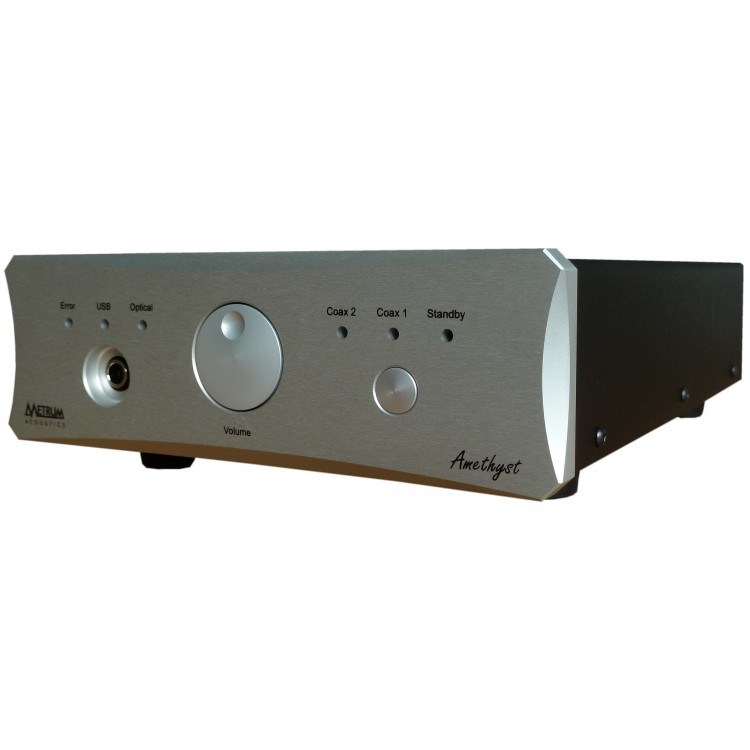

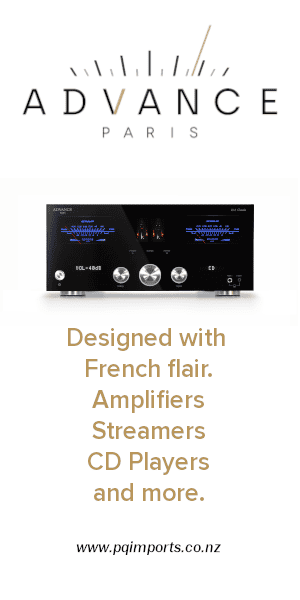

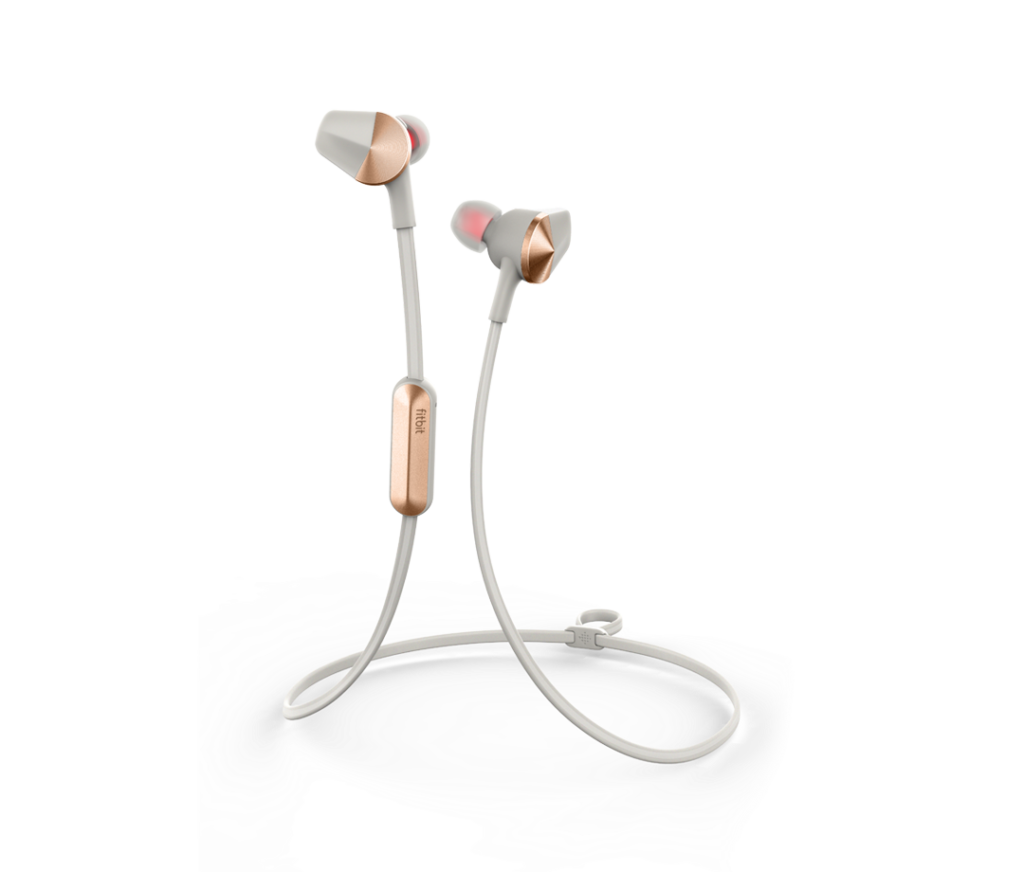
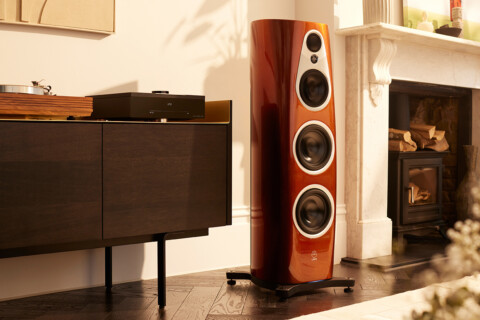
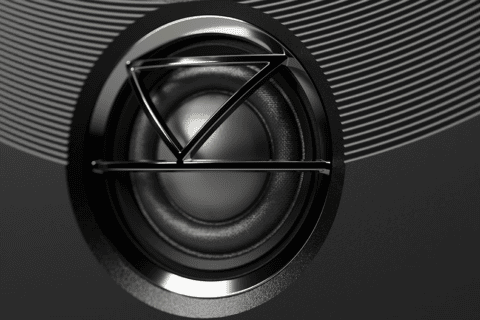
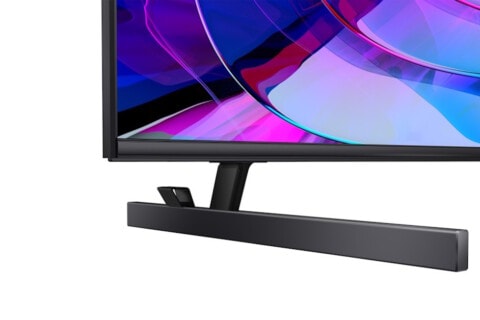
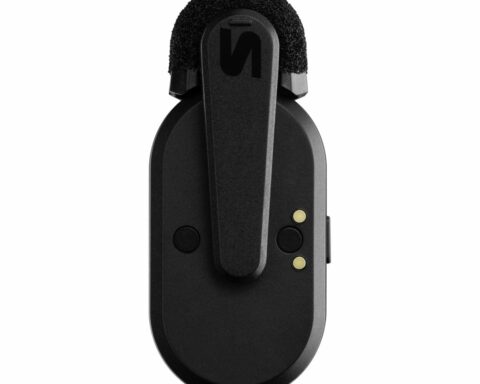
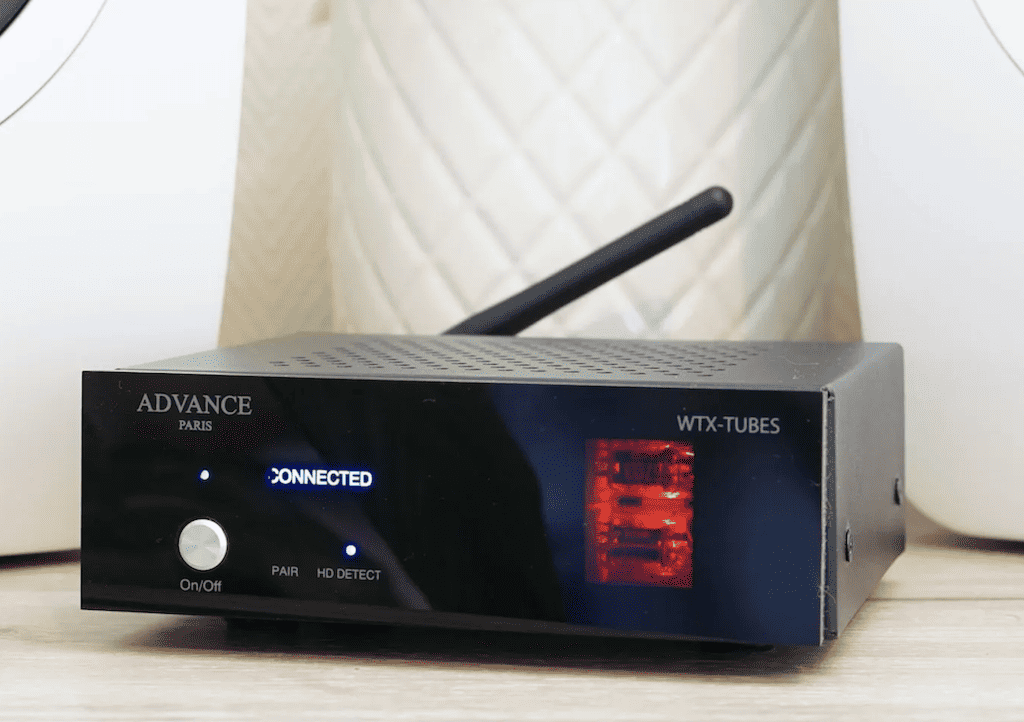

Ian replies: “Hi Andy,
Thanks for your time and positive Review. As an update and only recently announced – MQA will become available in the form of a modular option for all DAC TWO models shipped from Metrum as of August 2017. BTW Cees is looking forward to your endorsement (with Royalties) when you become a Rock Star. Cheers Ian”
Nice review…but it would be even more interesting if you compare it Amethyst with Musette (predecessor without haedphone amp).
Hi Denis, the Musette has been discontinued but you can read my review of it on this site.
Hi Andrew…I have a Musette ….that is why i was interested in comparison…to see what new (if any) brings Amethyst…by “new” i mean all the diff. comparing to Musette. That is i think a question in a many Musette owners…I am talking about a sound not features like headphones jack because it has a new dac and FPGA inside…but aside that i like your review…